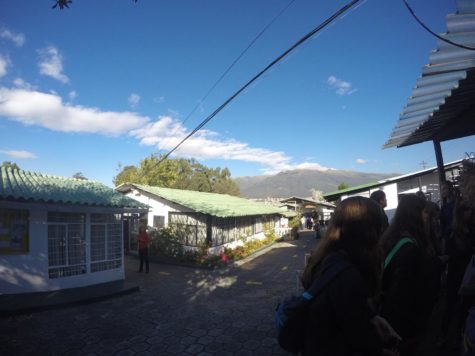Climate change: fiction, fact, and why it matters

January 23, 2018
From the debates leading up to the Presidential election in 2016 to President Trump’s withdrawal of American support for the Paris Climate Accord, the politically-charged issue of global climate change has been all over news media and politics. “In the East, it could be the coldest New Year’s Eve on record,” the President wrote on his Twitter account last December. “Perhaps we could use a little bit of that good old Global Warming that our Country, but not other countries, was going to pay trillions of dollars to protect against. Bundle up!”
Despite the apparent skepticism exhibited in this tweet, the existence of global climate change has been just about conclusively proven to be true: average global temperatures have increased by 1.4 degrees in the past 140 years, and this statistic can be so much as doubled in the Arctic regions of Alaska, Canada, and Russia, according to National Geographic.
However, even with this proof, the President is far from alone in his belief: a 2016 poll suggests that only 49% of Americans trust climate change scientists to provide accurate results, and as few as 27% agree with the scientific claim that human activity plays a dominant role in instigating climate change.
In many cases, this is because the impact of climate change is hard to observe on a local level. In fact, on a smaller scale, it can even seem like temperatures are cooling down instead of heating up.
This winter, as President Trump referenced, areas of the United States are seeing an increase in quantity and intensity of blizzards and snowfall. However, specialists actually believe that global climate change is responsible for this pattern as well, a fact often lost when the issue is simplified to the name ‘global warming’.
Here’s how it works: as temperatures rise due to climate change, larger bodies of water become more likely not to entirely freeze over in the winter. This means that more water is available for evaporation, leading to an increase in quantity of snow.
At the same time, the warmer air that climate change causes can hold more moisture than cooler air, and since precipitation, like snowfall, happens only when clouds become too heavy that they have to release moisture, the suddenly more-frequent storms are also more intense.
Through the combination of these factors, it’s easy to see how climate change might be responsible for the harsh winter weather the United States has seen in recent years, from the intense storms of January 2016 to Winter Storm Grayson currently assailing the East coast.
Climate change has already and will continue to produce a variety of other devastating effects: shrinking glaciers, rising sea levels, and a global earlier spring time, upsetting the natural cycles of plants and animals.



